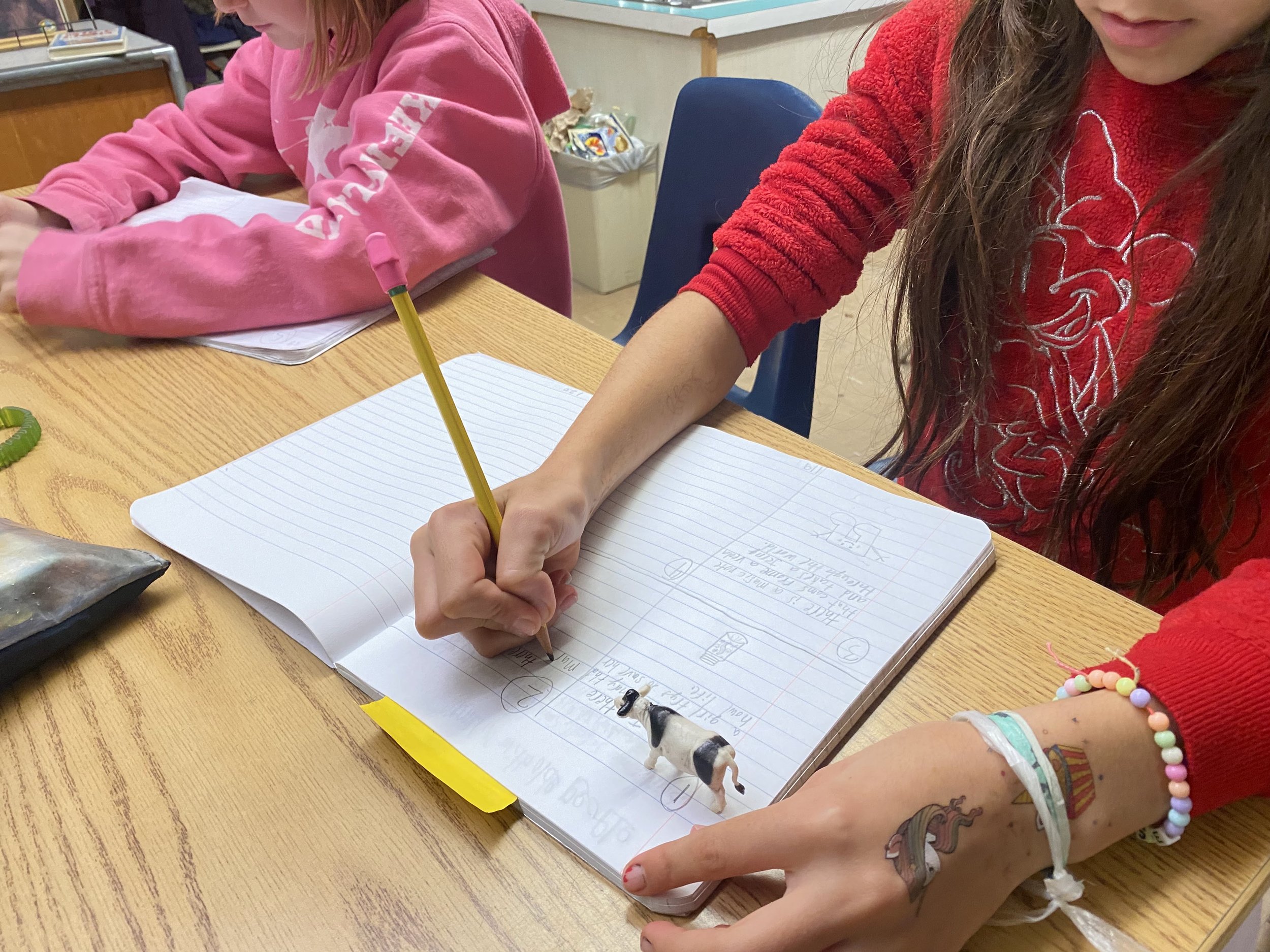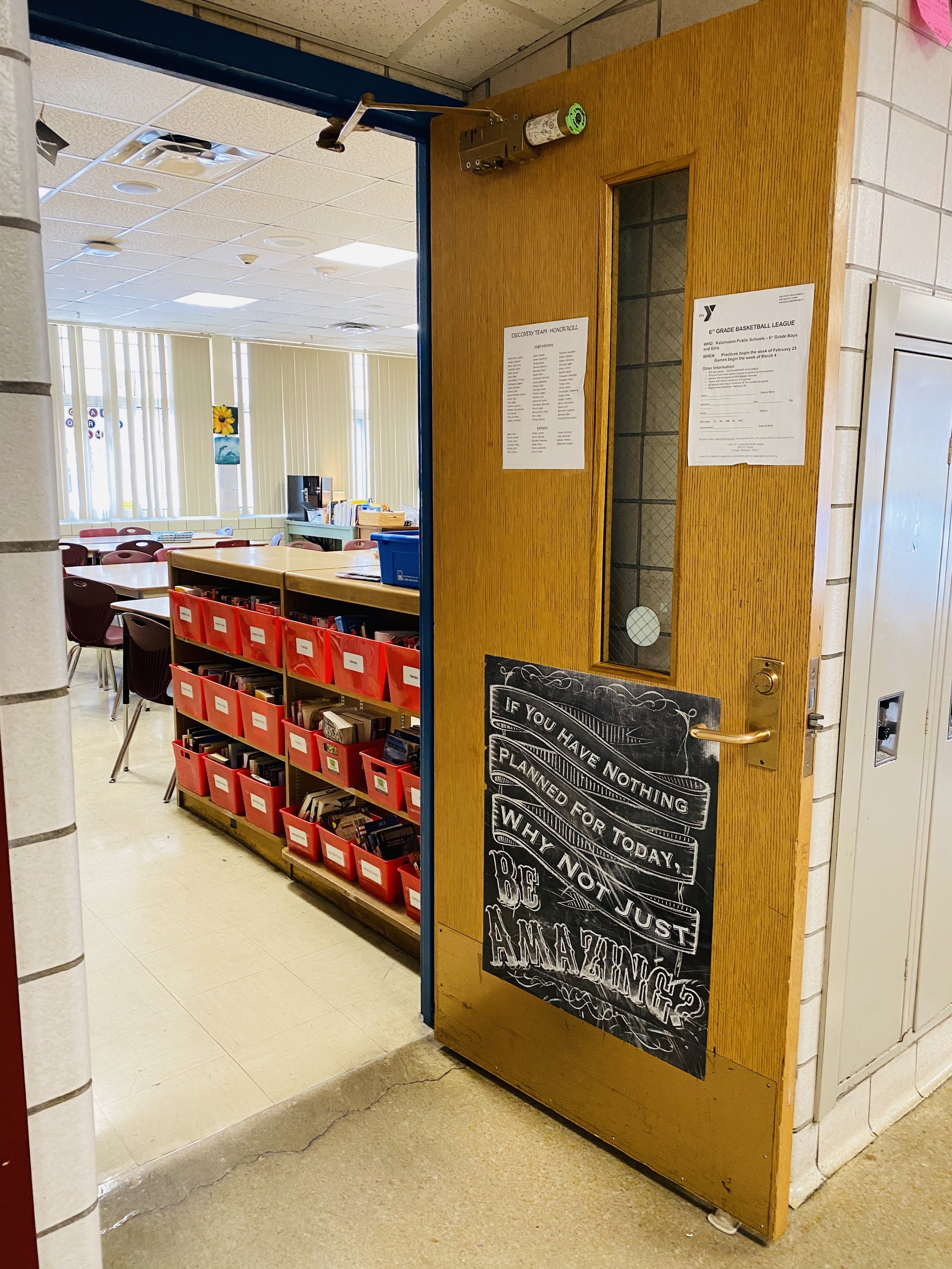
Together, let’s amplify voices and foster strong writing communities.
Writing Together: Building Writing Communities in All Subject Areas
How do we use writing as a tool to create the connections we need to build and sustain our community?
Writing Together is a comprehensive framework of resources and workshops designed to support educators in enhancing writing instruction across all content areas. These workshop materials provide valuable tools and strategies to help schools establish a unified approach to writing. The goal of the work is to empower educators with the confidence and competence to improve student writing skills through effective and cohesive teaching methods.
Writing Together is not a new building initiative, it is a way to communicate and collaborate in professional learning communities.
Included in this resource collection are resources that focus on the four tenets of building writing communities:
Collaborative Environment through Speaking and Listening
Inspiring Joy
Using a Common Language and Common Writing Process
Using Mentor Texts
The goal is to empower educators with the confidence and competence to improve student writing skills through effective and cohesive teaching methods.
Why Build Writing Communities?
Building writing communities within classrooms creates a collaborative environment where students feel empowered to express their thoughts, ideas, and knowledge. Find out why it matters and the research behind building writing communities.
Writing Community Tenets
The four tenets of a writing community guide all of the workshops. These principles create an environment where students can confidently express their voices, improve their writing, and engage in meaningful dialogue.
Resource Library
Access the teacher resource library where you can review resources for teaching writing, sub plans, Canva templates, and book lists/recommendations.

Every teacher is a teacher of writing because amplifying student voices and helping them express their ideas clearly strengthens learning across every subject.
-
Collaborative Environment through Speaking and Listening
A thriving writing community requires students to listen actively and speak constructively.
-
Inspiring Joy
Joyful writing fosters creativity. Giving students choice and publishing opportunities builds excitement and pride in their work.
-

Using a Common Language and Common Writing Process
Using a shared vocabulary and consistent writing process (prewriting, drafting, revising, etc.) strengthens writing instruction across content areas.
-

Using Mentor Texts
Mentor texts provide students with real-world examples of strong writing.
FAQs
Is Writing Together a program or curriculum?
No, Writing Together is not a canned program or curriculum. Writing Together is a framework for developing and building writing communities in secondary school settings. Focusing on disciplinary literacy, the workshops aim to leverage what is already being done in classrooms and then focus on communication between professional learning communities.
What is the research behind this work?
Writing Together workshops are based on lots of research. The main work that focuses on disciplinary literacy are these four resources:
Applebee, A. N., & Langer, J. A. (2011). EJ Extra: A snapshot of writing instruction in middle schools and high schools
College Entrance Examination Board. (2003). The Neglected “R”: The Need for a Writing Revolution. Report of The National Commission on Writing in America’s Schools and Colleges.
Graham, S., & Perin, D. (2007). Writing next: Effective strategies to improve writing of adolescents in middle and high schools – A report to Carnegie Corporation of New York.
Graham, S., Bruch, J., Fitzgerald, J., Friedrich, L., Furgeson, J., Greene, K., Kim, J., Lyskawa, J., Olson, C.B., & Smither Wulsin, C. (2016). Teaching secondary students to write effectively
The research is clear: “Writing is everybody's business, and state and local curriculum guidelines should require writing in every curriculum area and at all grade levels” (College Entrance Examination Board, 2003).
So, is Writing Together affiliated with any institution, business, or organization?
Writing Together is an independent series of workshops and trainings for teachers at the secondary level.
Writing Together most closely aligns with the research provided by the National Writing Project. The National Writing Project approach: “We engage great educators at all levels and in all subjects in deepening their understanding of the teaching of writing and working as leaders in their schools, communities, and in the profession at large.”
Simply, Writing Together guides participants to build on the work already happening in their classrooms while they engage in collaborative conversations about writing to foster a strong sense of community.
I’m not a writing teacher. Why am I attending a writing training?
Writing, as it applies to all subject areas, is a versatile tool for thinking, communicating, and learning. It involves expressing ideas, reflecting on content, and organizing thoughts in a structured way. Writing can take different forms in every discipline—from analytical essays in literature to lab reports in science, problem-solving explanations in math, or reflective journals in social studies. It serves as a method to demonstrate understanding, engage with subject matter deeply, and make connections across various fields. Writing enhances critical thinking, promotes communication of complex ideas, and supports active learning in all areas of study.
Why is Building Writing Communities important in content areas outside of English?
Writing enhances critical thinking, communication, and creativity across all subjects. Building writing communities fosters collaboration and improves students' ability to express and organize their ideas, regardless of the content area, leading to a deeper understanding of the material.
How can I incorporate the writing process into my subject area if I’m not an English teacher?
The writing process—prewriting, drafting, revising, editing, and publishing—can be applied to all subjects. Whether students are writing lab reports in science or analyzing historical events in social studies, using a structured writing process helps them articulate and organize their thoughts clearly.
Why should I first look at the types of writing I am doing in my classroom? How do the traits of writing apply to my classroom?
Starting by examining the types of writing in your classroom helps you identify how writing supports the thinking and learning processes specific to your subject. Different forms of writing—whether they are reflective journals, lab reports, argumentative essays, or technical explanations—develop critical skills that align with your content area goals.
When we talk about the traits of writing—like organization, clarity, voice, or precision—these aren’t just “English skills.” In every subject, students need to clearly express their thinking, make connections, and communicate effectively. For example:
In science, precision and accuracy in writing align with the clarity needed in lab reports.
In social studies, developing strong arguments mirrors the skills required in persuasive essays.
In math, concise and logical organization enhances problem explanations and reasoning.
By understanding how writing traits apply to your content area, you amplify students’ voices and help them think deeply, articulate ideas, and engage meaningfully with your subject. It also allows you to design writing opportunities that feel authentic to your discipline while developing lifelong literacy skills.
What are some strategies to help students provide effective peer feedback?
Teach students how to give specific, constructive, and kind feedback through guided practice. Establish classroom norms for respectful listening, and use peer review rubrics to help students understand what to look for when evaluating their peers' work.
What types of mentor texts should I use in my classroom?
Choose mentor texts that reflect a variety of genres, voices, and cultures. This gives students exposure to diverse writing styles and perspectives, helping them see different approaches to writing across content areas. The best mentor text is the example that YOU wrote as a teacher ahead of time as an example.
How can I inspire joy in writing for students who are reluctant writers?
Incorporate student choice by allowing them to select topics or self-direct their projects. Create publishing opportunities, such as classroom story walks or digital portfolios, and give students uninterrupted writing time to explore their ideas without pressure. Engaging in activities tailored to different learning styles, like movement-based or auditory writing exercises, can also spark interest.
Want to hear more about Building Writing Communities?
Fill out the contact form.
stephanie@writingmindset.org






